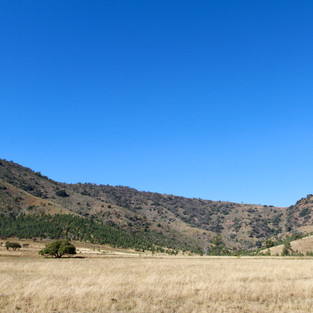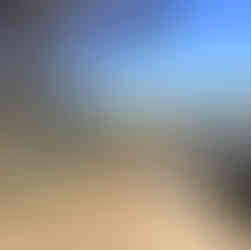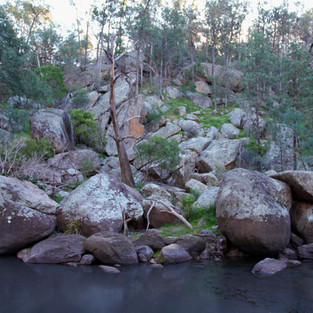WARRABAH NP .... mid western NSW
- Woolgoolgaoffroad
- Jul 10, 2020
- 6 min read
If you were to google the word Gorge as a noun the meaning would be "a narrow valley between two hills or mountains, typically with steep rocky walls and a stream running through it". Well I reckon Warrabah National Park ticks all these boxes and more, it’s remote, you need to be self sufficient, there’s plenty of activities and it helps if you have a 4wd to get there. Warrabah National Park is a special park, on the western slopes of Australia's Great Divide. The park was declared in 1984 and now covers nearly 5000 hectares, along 20 km of the westward flowing Namoi River.

My trip started at the small town of Manilla, 80km north of Tamworth. Manilla has only the basic facilities like a mechanical workshop, a single supermarket and the last stop to fuel up. Heading north from Manilla across the Namoi River turn off onto the Fossickers Way. The first 15km is a narrow sealed road wandering past hobby farms and old buildings, as soon as you hit the dirt the farms seem to grow in size to huge pastoral stations and crop growing areas. The next 25 km on the Namoi River Road into the park is unsealed and you’ll pass through station roads that have seen little or no track maintenance and can be a little sketchy in the corners.

The landscape seems to change over every hill and around every corner out here as you rise and fall over the Nandewar Range which was first seen back in 1818 by explorer John Oxley. Gum forests soon give way to forests full of cool climate Conifer trees, paddocks open up as far as you can see, then back down into another gum forest. There are several turns towards the Warrabah, but these are sign posted towards the park. Entering the park you are greeted by the usual information board where if you haven’t booked and paid online, it might be wise to go back to where there’s phone service.
The main campground sits right on the Namoi River with plenty of sites for tents and camper trailers along with composting toilets, firewood bins and bbq’s. The Namoi River has formed an impressive gorge, where it cuts through the Nandewar Range. Huge Granite Boulders line the river where it burbles away creating pools where you can fish for Yellow belly, Cod, Redfin or Carp. Warning signs suggest if swimming in these pools there can be the chance of submerged logs or cold water. There’s a vast range of animals that frequent the river from little willy wag tails, shags, lizards and snakes and if you are a morning person Platypus can be spotted. Although they did elude me this time.

The park lies on the rugged Nandewar Range, part of a belt of granite that extends 200km towards Queensland. This part of the Nandewar Range still has woodlands that form an important corridor for travelling wildlife and still has large areas of Grassy White Box woodlands, their survival is threatened in most other parts of northern NSW. Out here you need to come prepared for any season, stinking hot days and chilly nights down below zero.

Another option for those with a proper 4wd and offroad trailer is to head to the more remote campsite of Gum Hole camping area, only 3km away but it’s steep and narrow as it rises and falls several hundred metres over the 3km passing through huge granite boulders and passing through different forests areas. The camp grounds are great, each having their own bbq fire pit and table, firewood is provided by National Parks, a drop toilet is nearby all with water views overlooking several large pools.

Along with the main campground there are no bins provided as this keeps the vermin away and keeps the park cleanish. Camping here at Gum Hole is great, as it gives you the privacy away from the main grounds and allows you to explore more of the ruggedness of this area. There are several walks from the camp ground along the river bank into the gorge in both directions but the best walk is the downstream walk.
This takes you along the steep sided gorge walls where 20 metre high rock formations open up giving you some fantastic views. Keep an eye out for just how high the Namoi River can rise in flood times, with the debris high in the trees above and the piles of drift wood that’s been left high and dry. This is a great area to throw a few lures around to try your luck in these deep pools, and in summer even try riding the small rapids. Most walkers with a medium fitness level can follow the river, where rock hopping can be combined with swimming. If you are willing to climb to some of the higher peaks, the views are very rewarding.

After kicking back here for several days with no phone reception, breathing the clear mountain air and just chilling out, the alternative way out of the park is to head east towards the coast and to explore more of the tablelands that surround the Nandewar Range. Heading back out past the main campground and out of the park for another 10km, turn left here onto Glenbarra Trail. The great thing about this area is just not knowing what to expect around the next corner. Trackside there’s several old graves that sit quietly in the valley. These graves date back to 1898 when a little girl, Sarah Abbott passed away when she was only 4 years of age. Apart from several other family member graves here, not much is known about these family members or just how they passed away, but it makes you ponder just how life might of been some 115 years ago out here.

Just nearby old buildings and yards overlook the Namoi River, it’s reported that squatters moved to this area in the mid 1800's beyond the limits of settlements to start a new life, they were attracted here to the prime sheep grazing land, and soon found gold in nearby Rocky River swelling the areas population. The Glenbarra Trail will heads down to the Namoi River with a much larger crossing. This is one crossing where you might need to check the water flow and depth if any rain has been around as the river can be some 100 foot wide at the best of times. It's a great place to stop for a cuppa and even to walk the old footbridge just down stream - obviously put in place by the locals when in times of flood.

The Glenbarra Trail forks after here, so swing left after the Namoi crossing. The roads out here are irregularly maintained and with a bit of traffic, weather conditions and stock moving around expect to find some rough patches with sand and bull-dust holes, being Granite county the roads can become a bit slippery due to the granite being the main source of material for the road base. What is surprising is the number of remote properties around these hills, and while it is ok to pass through on this main road there are signs in place warning you of no camping, shooting or fishing on their land. From open farmlands to thick scrubby forest the scenery changes over very rise.

Back in the day this was bushranger country where names like Captain Thunderbolt sent shivers down travellers spines, and you can see why as they could hide around the huge boulders that sit in the paddocks in the scrub. Captain Thunderbolt ( born as Fredrick Ward ) was a known cattle and horse thief in his 6 years of crime before being shot by local police. He is now buried in the cemetery at Uralla.
As you wander along through the localities of Balala, Retreat and Kingston there’s a number of old buildings that sitting in the paddocks that have been placed on the Register of the National Estate as Heritage Listed buildings. The Glenbarra Trail turns into Balala Retreat Trail and you know that civilisation isn't too far away as sheep stations give way to boutique horse studs, wineries and seasonal crop areas. The end of my journey soon came to a halt at the shire of Brushgrove where the bitumen started. Here there’s nothing more than a quaint restored school that was only in service from 1954 to 1964.

But at Uralla you’ll be pleasantly surprised with cafes, pie shops and even their own micro-brewery all in a historical town lined with old gas filled faux street lights. Theres even an option to do a heritage building walk viewing over 50 buildings dating back to the mid 1880’s.
Some say it's more about the journey than the destination, and visiting Warrabah National Park nothing can be further from the truth. I cant wait to go back.





































Comments